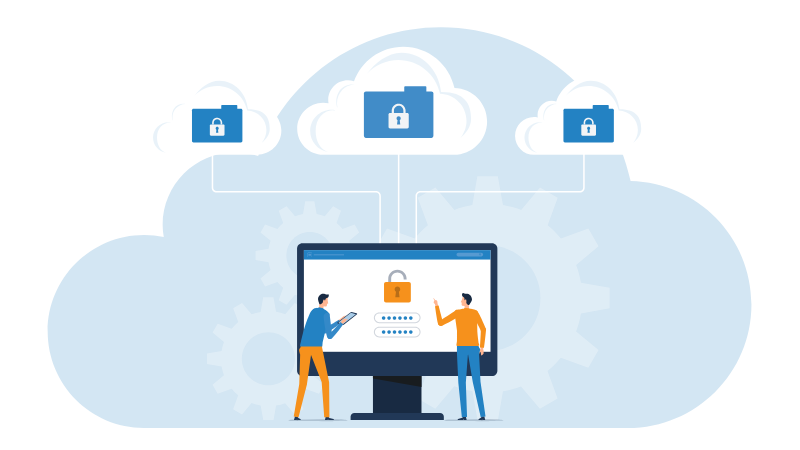A SAFER approach to cloud resilience and why true multi-cloud backup and disaster recovery should be core to any strategy.

In the cloud world, “set and forget” is a dangerous myth. Even the most established providers can disrupt access or erase data without warning. This article examines recent real-world cases, from AWS wiping out a decade of work to Google misconfiguring a pension fund account, Microsoft suspending OneDrive access and insider threats, to explain why multi-cloud backup and disaster recovery (DR) are not optional extras. They are essential.
Your data is not immune to your provider’s failures or insiders (Secure)
Case: AWS deletes 10 years of data without warning
A developer lost a decade of work, including Ruby gems, programming tutorials and an unpublished book draft, when AWS deleted their account. The usual 90-day grace period was skipped, and all data was purged in under 20 days. This was despite multi-region replication, separate encryption keys and established backup routines. AWS cited a “verification failure”, while speculation pointed to a faulty dormant account script. Nothing the user had done could recover the data [1].
Takeaway: Security must account for provider-side failures, not just common cyber threats. If the provider becomes the point of failure, your architecture can collapse.
Case: Insider deletion or sabotage
Security frameworks document cases where a privileged user, whether disgruntled or negligent, deletes critical cloud resources such as virtual machines, storage buckets or databases. Without immutable backups or retention policies that insiders cannot alter, recovery can be impossible. In some incidents, malicious insiders have deleted production data in retaliation for perceived grievances, causing lasting operational damage [2].
Takeaway: Insider misuse is a real risk. Your defences must account for intentional and accidental actions from within.
Your work must be accessible at all times (Available)
Case: Google accidentally deletes a pension fund’s cloud account
In May 2024, Google Cloud misconfigured private cloud provisioning for UniSuper, an Australian pension fund, inadvertently setting a finite term. After the term expired, the environment and backups were automatically deleted. Members lost access for nearly two weeks. Recovery was only possible because UniSuper held backups with a different provider [3].
Takeaway: Accidents in provider infrastructure can disrupt availability. Independent redundancy guarantees continuity.
Case: Microsoft suspends OneDrive access without reason
In June 2025, a OneDrive user lost access to decades of personal data when Microsoft suspended their account without explanation. Support channels offered only automated responses and no immediate resolution. A similar issue affected a LibreOffice contributor, locking away vital project files. While access was eventually restored, these cases show how service availability can vanish instantly [4].
Takeaway: Availability is not guaranteed. Even temporary suspensions can cause critical downtime and disruption.
Hope is not a recovery plan (Recoverable)
These incidents reveal the weaknesses of relying on a single provider.
| Pillar | Action |
| Multi-Cloud | Distribute data across more than one cloud provider to reduce single-provider risk. |
| Recovery Simulation | Run regular DR drills and measure against your recovery time objectives. |
| Know Your Risks | Understand provider terms, account deletion policies, cyber threat exposure and support limitations. |
| Protect From Insiders | Implement immutable backups, least-privilege access, activity logging and behaviour monitoring. |
| Local Backups | Maintain offline or on-premise copies such as SSD, NAS or tape; an infrequent backstop against the worst-case scenarios. |
Conclusion
An account purge, a misconfiguration, an unexplained suspension or a malicious insider can all take you offline without warning. The cloud is powerful, but it is not invincible. Your strategy must ensure your data is secure, available and recoverable, regardless of provider actions or internal threats.
At Pipe Ten, we help organisations build truly resilient infrastructure. Multi-cloud backup and DR are not about complexity; they are about survival. We believe in making your systems S.A.F.E.R. from the ground up.
References
[1] Seuros. AWS deleted my 10 year account without warning. https://www.seuros.com/blog/aws-deleted-my-10-year-account-without-warning/
[2] Insider Threat Matrix. Cloud service sabotage scenario. https://insiderthreatmatrix.org/articles/AR4/sections/IF014/subsections/IF014.005
[3] Axios. Google Cloud’s pension fund error. https://www.axios.com/2024/05/30/google-cloud-pension-error
[4] Windows Central. Cloud storage risks and how to mitigate them. https://www.windowscentral.com/hardware/storage/cloud-storage-risks-how-to-mitigate
[5] LowEndBox. PSA: Your data is not safe on just one cloud. https://lowendbox.com/blog/psa-your-data-is-not-safe-on-just-one-cloud-aws-nuked-a-10-year-account-and-all-data-without-warning/
[6] Unite AI. Nearly 80% of training datasets may be a legal hazard for enterprise AI. https://www.unite.ai/nearly-80-of-training-datasets-may-be-a-legal-hazard-for-enterprise-ai/
Author: Carl Heaton
Carl is a founder and CTO/CISO of Pipe Ten and uses his role to drive the company’s vision to transform business online in delivering it’s mission to forge agile technical partnerships that accelerate web success. Carl boasts an illustrious career spanning over two decades, starting as a fledgling web developer in his teens, he swiftly ascended the ranks, honing his skills in architecting secure web application infrastructure. With his finger on the pulse of emerging web technologies, Carl has tracked and influenced the ever changing world of cyber security, internet governance, industry regulations and information security compliance ensuring Pipe Ten successfully achieved and maintain ISO/IEC 27001 certification.
